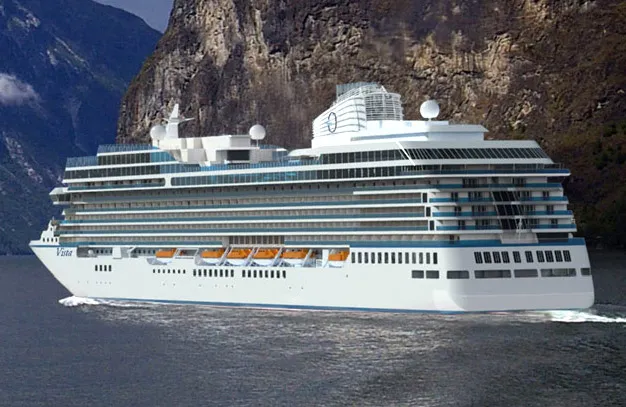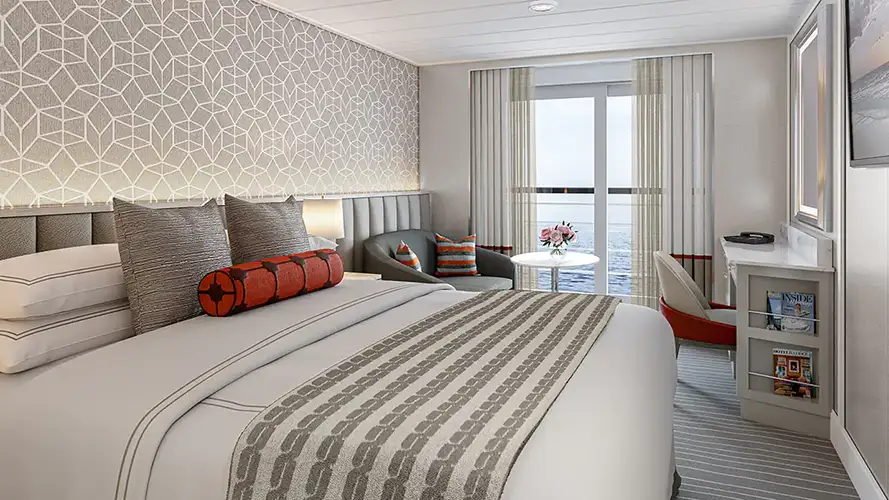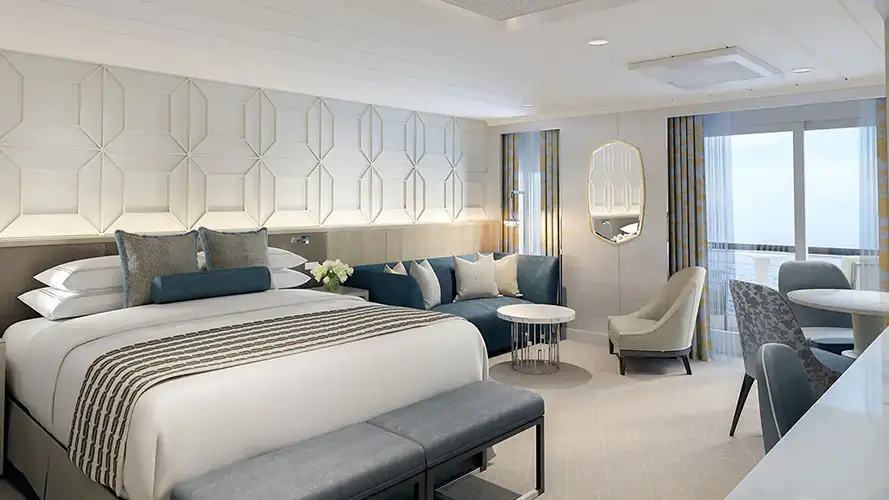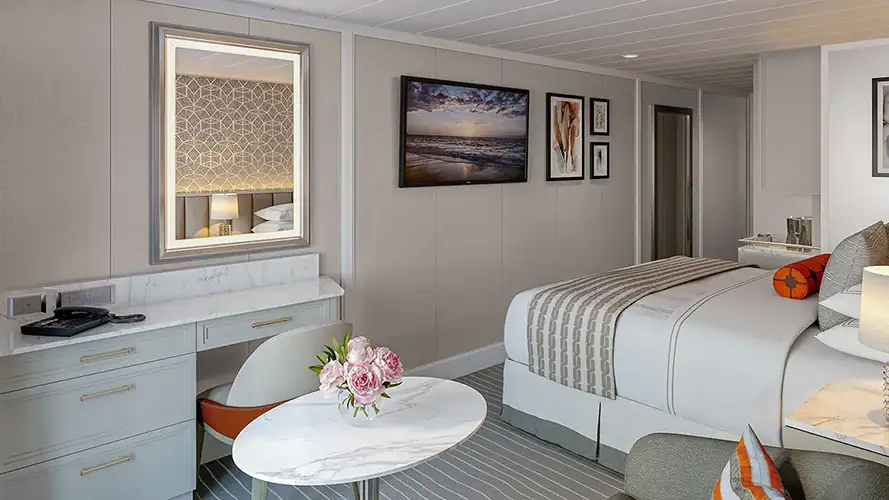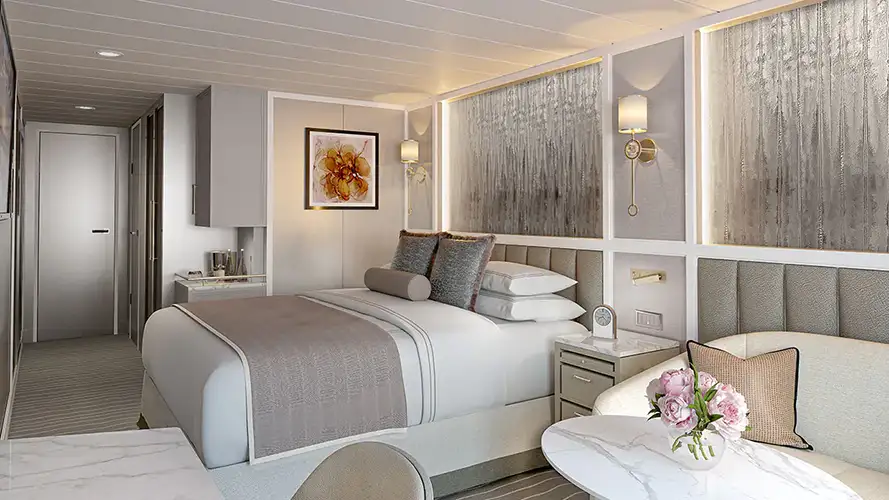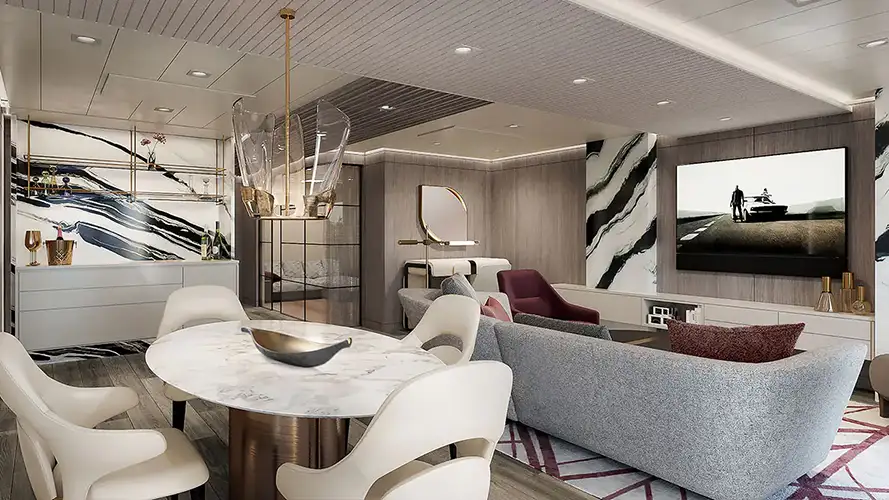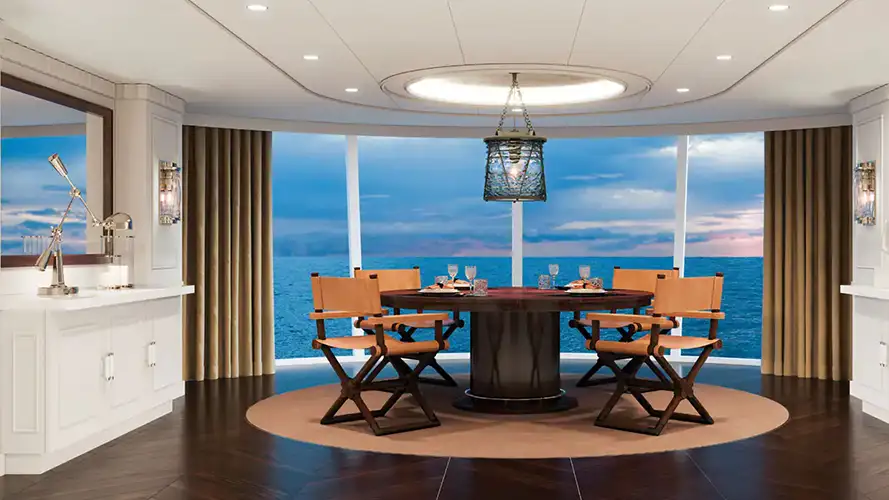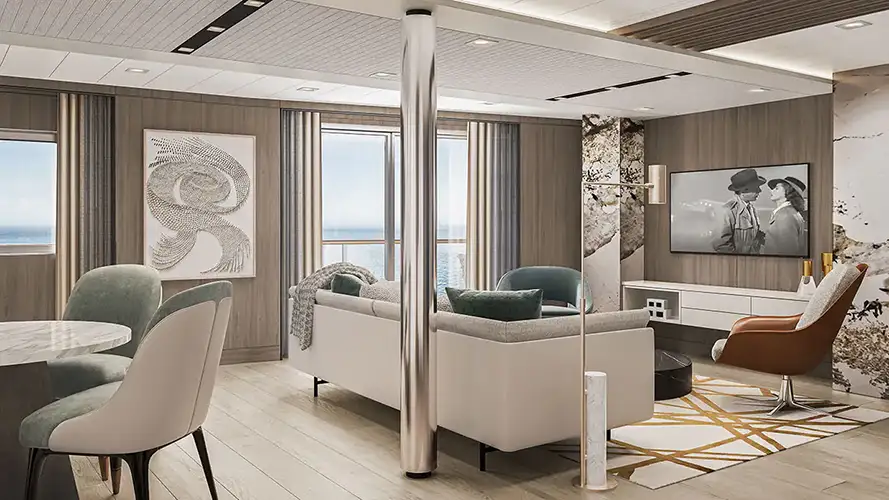Oceania Cruises Northern Europe: 26 nights from Southampton with Vista
Jun 3, 2025
United Kingdom, France, Spain, Ireland, Norway, Denmark
Cruise itinerary
Departure Port: Southampton ➞
Landing: Oslo
-
Tuesday, June 3, 2025 - 5:00 PMSouthampton
-
Wednesday, June 4, 2025 6:15 AM - 5:00 PMSt Malo
-
Thursday, June 5, 2025Navigation
-
Friday, June 6, 2025 5:00 AM - not foundBordeaux
-
Saturday, June 7, 2025 not found - 4:15 PMBordeaux
-
Sunday, June 8, 2025 7:00 AM - 6:00 PMBouchemaine
-
Monday, June 9, 2025 7:00 AM - 6:00 PMGijon
-
Tuesday, June 10, 2025 7:00 AM - 4:00 PMLa Coruna
-
Wednesday, June 11, 2025 8:00 AM - 6:00 PMBilbao
-
Thursday, June 12, 2025 7:00 AM - 4:00 PMLa Rochelle
-
Friday, June 13, 2025 8:00 AM - 3:00 PMBrest
-
Saturday, June 14, 2025 10:00 AM - 10:00 PMLe Havre
-
Sunday, June 15, 2025 7:00 AM - 10:00 PMSouthampton
-
Monday, June 16, 2025Navigation
-
Tuesday, June 17, 2025 8:00 AM - 9:00 PMBelfast
-
Wednesday, June 18, 2025 10:00 AM - 7:00 PMKillybegs
-
Thursday, June 19, 2025 10:00 AM - 6:00 PMPortree
-
Friday, June 20, 2025 8:00 AM - 4:00 PMLerwick
-
Saturday, June 21, 2025 9:00 AM - 10:00 PMAlesund
-
Sunday, June 22, 2025 7:00 AM - 4:00 PMGeiranger
-
Monday, June 23, 2025 7:00 AM - 5:00 PMNordfjordeid
-
Tuesday, June 24, 2025 7:00 AM - 3:00 PMFlam
-
Wednesday, June 25, 2025 7:00 AM - 7:00 PMStavanger
-
Thursday, June 26, 2025 8:00 AM - 7:00 PMKristiansand
-
Friday, June 27, 2025 8:00 AM - 8:00 PMSkagen
-
Saturday, June 28, 2025 8:00 AM - not foundOslo
-
Sunday, June 29, 2025 not found 7:00 PMOslo
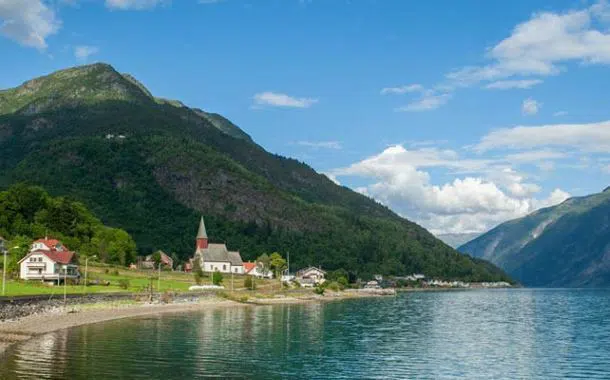
Southampton
Southampton is a city positioned in the South of Great Britain and its port is one of the main ports in Europe. From the port of Southamptos it is possible to set sail for a Cunard transatlantic cruise and reach New York, or visit Amsterdam and Belgium with an MSC cruise. The city offers, further to the New Forest National Park, a wide natural park with its suggestive woods, also many museums and art galleries and remarkable architectural works. Noteworthy is King John’s Palace, of Norman origins as well as the old walls with 7 entrances to the city. An evidence of the Victorian Age is Tudor House, collecting objects dated back to that period. For the art lovers, Southampton City Art Gallery offers exhibitions of any kind of art, from drawing to photography with shows that attract many visitors.

St Malo
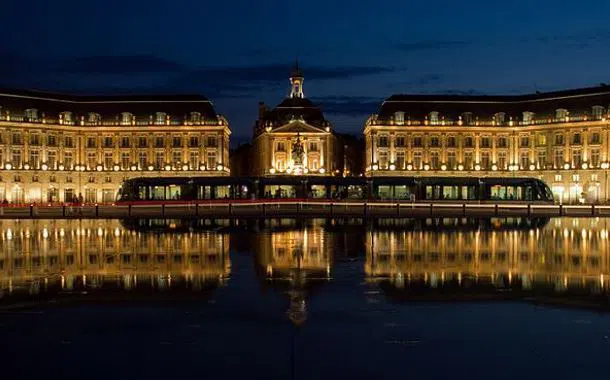
Bordeaux
Bordeaux is city on the Atlantic Ocean and its port hosts big ships. The city had initially the name Burdigala and was established in III Century B.C. by the Gallic people.
It was a neuralgic centre for the International commerce of tin and lead. After the arrival of the Romans, Bordeaux becomes one of the richest cities of Gallia and is robbed many times by populations such as Visigoths and Vandals. With the passing of time, the City starts economic relationships with England trading in salt and wine and, in XVI Century, also the colonial sugar and slaves start having a leading role in the sustenance of the city.
Bordeaux has a liveable city centre that can be visited by foot and that offers beautiful attractions and energy. At night, the city get crowded with young people filling up the main squares and the bars where you can taste excellent wines and plunge in the romantic atmosphere that the city assumes after the sunset. You can’t miss out Château de la Brède, a gothic style castle dated back to XIV Century, surrounded by a moat and an English garden. The philosopher Montesquieu lived here and tourists can visit his library and his bedroom that are just like they were in XIX Century.
We suggest to visit also the beautiful Saint Eloi Church. Established in XII Century, the construction and renovation works lasted until 1400’s. The current structure is dated back to this period. The church is one of the stop-overs of Santiago de Compostela walking tour and is part of UNESCO World Heritage. Bordeaux offers a wide variety of gastronomic and wine choices. There are many restaurants and bars where you can taste the best wines on the market and an amazing cuisine.

Bordeaux
Bordeaux is city on the Atlantic Ocean and its port hosts big ships. The city had initially the name Burdigala and was established in III Century B.C. by the Gallic people.
It was a neuralgic centre for the International commerce of tin and lead. After the arrival of the Romans, Bordeaux becomes one of the richest cities of Gallia and is robbed many times by populations such as Visigoths and Vandals. With the passing of time, the City starts economic relationships with England trading in salt and wine and, in XVI Century, also the colonial sugar and slaves start having a leading role in the sustenance of the city.
Bordeaux has a liveable city centre that can be visited by foot and that offers beautiful attractions and energy. At night, the city get crowded with young people filling up the main squares and the bars where you can taste excellent wines and plunge in the romantic atmosphere that the city assumes after the sunset. You can’t miss out Château de la Brède, a gothic style castle dated back to XIV Century, surrounded by a moat and an English garden. The philosopher Montesquieu lived here and tourists can visit his library and his bedroom that are just like they were in XIX Century.
We suggest to visit also the beautiful Saint Eloi Church. Established in XII Century, the construction and renovation works lasted until 1400’s. The current structure is dated back to this period. The church is one of the stop-overs of Santiago de Compostela walking tour and is part of UNESCO World Heritage. Bordeaux offers a wide variety of gastronomic and wine choices. There are many restaurants and bars where you can taste the best wines on the market and an amazing cuisine.
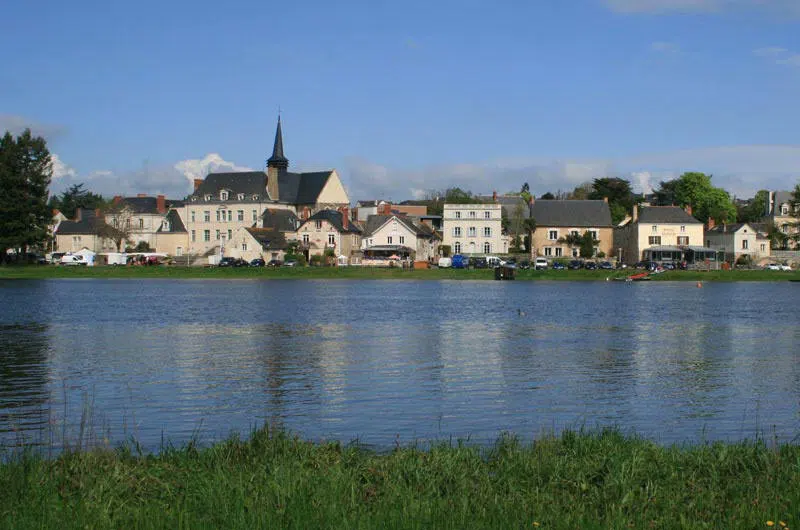
Bouchemaine
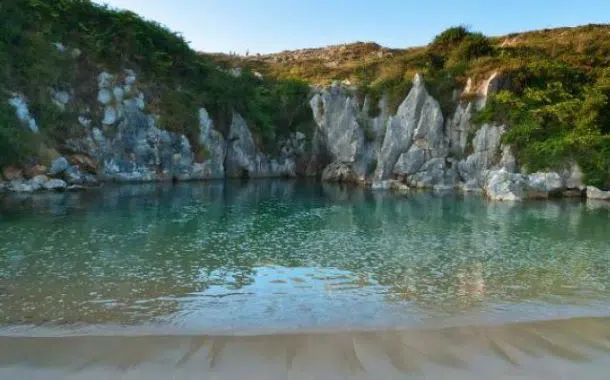
Gijon
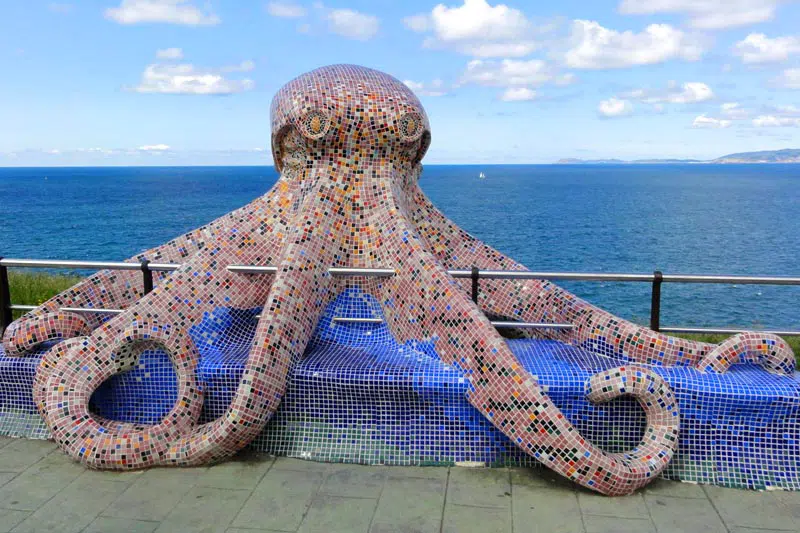
La Coruna
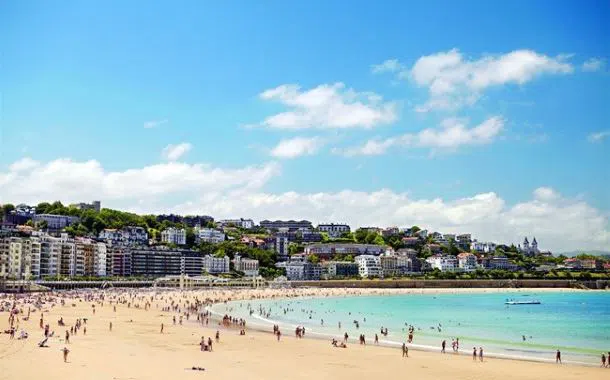
Bilbao
Bilbao, located on the Northern coast of Iberian Peninsula, is the ideal starting point to visit this area of Spain. Tourists come here to enjoy the beaches, discover its culture and absorb its mild climate. With one of Europe's largest ports, the vibrant city has been able to invest in a redevelopment plan, trasforming its brownfield sites into cutting-edge cultural and architectural venues.
But it is its historic center, which continues to fascinate with its stores, alleys and monuments. The city was officially founded in the 1300s, consolidating its economic position. Thanks to the exploitation of mining and steel industry areas, port and ship activity and its financial center, the city became one of the most important cities during the Industrial Revolution.
A modern and transportation network connects Bilbao to other cities in Spain. Thanks to its beautiful beaches, the city is the ideal destination for beach lovers. Beaches are not the only attractions in Bilbao, there are very fascinating places besides the beautiful beaches: the Cathedral of Santiago, located in the heart of the Old Town (Casco Viejo) is dedicated to the apostle Santiago, the official patron saint of the city of Bilbao since 1643.
Built at the end of the 14th century in the Gothic style, the neo-Gothic tower and façade were made by Severino Achúcarro in late 1887. The Old Bridge of San Antonio is located next to the church of the same name. Pablo de Alzola and Ernesto Hoffmeyer built a second bridge in 1877 but it was destroyed during the Civil War in 1937. San Antonio Bridge dates from the early 20th century, also known as the Atxuri Bridge, connecting the old neighborhood to the rest of the city. For nature lovers, the city is surrounded by a fertile landscape of forests, mountains, beaches, and cliffs that make Bilbao a tourist destination. A holiday aboard a cruise offers the opportunity to visit this beautiful city and partecipate in one of these unique activities.
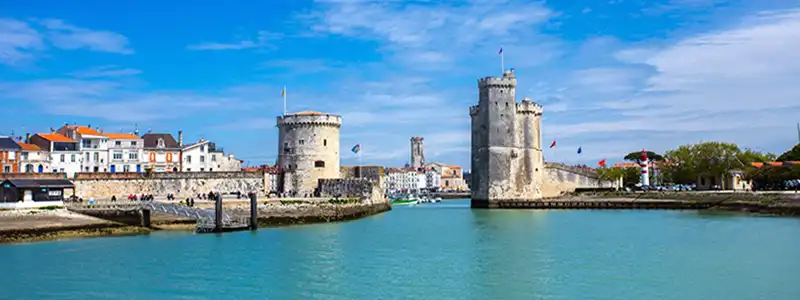
La Rochelle
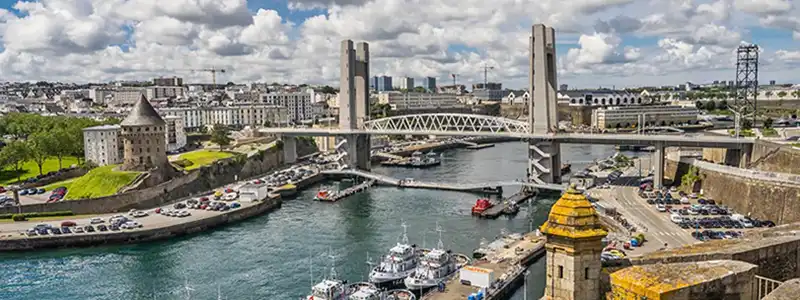
Brest
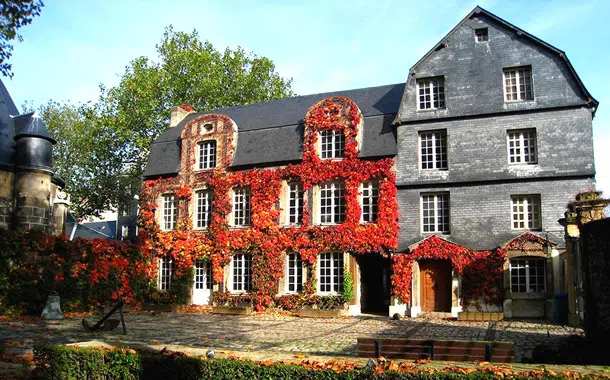
Le Havre
Le Havre is worth a visit, not only as a stopover on the way to Paris or other inland destinations, but also as one of the great examples of post-war planning. It is a strange and strangely fascinating city, listed by
Unesco as a World Heritage Site.
Wandering through the streets of the seaside town of Le Havre, one might think one had stumbled upon a forgotten outpost of the Eastern Bloc. Obliterated by World War II bombings, the city was completely rebuilt by the Belgian architect Auguste Perret and, what emerged from the ashes of old Le Havre, is a kind of love letter to concrete: endless rows of blocks of buildings, straight avenues stretching out from the central square, dominated by the 100 m high 'Stalinist Baroque' style cathedral, looks like something straight out of the pages of '1984'.

Southampton
Southampton is a city positioned in the South of Great Britain and its port is one of the main ports in Europe. From the port of Southamptos it is possible to set sail for a Cunard transatlantic cruise and reach New York, or visit Amsterdam and Belgium with an MSC cruise. The city offers, further to the New Forest National Park, a wide natural park with its suggestive woods, also many museums and art galleries and remarkable architectural works. Noteworthy is King John’s Palace, of Norman origins as well as the old walls with 7 entrances to the city. An evidence of the Victorian Age is Tudor House, collecting objects dated back to that period. For the art lovers, Southampton City Art Gallery offers exhibitions of any kind of art, from drawing to photography with shows that attract many visitors.
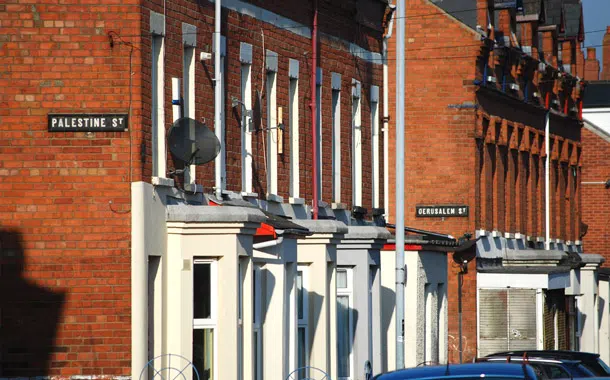
Belfast
Discover Belfast: A Historic Gem in the United KingdomBelfast, located in Northern Ireland, is a city with a rich history, vibrant culture, and stunning landscapes that offer visitors a unique blend of tradition and modernity. Founded in the 17th century, Belfast has transformed into a dynamic urban center known for its warm hospitality, historic landmarks, and thriving arts scene.
Moderate Climate of BelfastBelfast experiences a temperate maritime climate with mild summers and cool winters influenced by the Atlantic Ocean. Summer months are ideal for exploring outdoor attractions like Botanic Gardens or taking a leisurely stroll along the River Lagan. Winter brings opportunities to visit cozy pubs, enjoy cultural events, and explore indoor attractions such as museums and galleries.
Top Attractions and Places to Visit in BelfastExplore Belfast's top attractions, including the iconic Titanic Belfast museum commemorating the city's maritime heritage, the historic Crumlin Road Gaol offering insights into Northern Ireland's past, and the vibrant St. George's Market for local crafts and food. Visit the Ulster Museum for art and history exhibits, hike Cave Hill for panoramic views, or take a Black Taxi tour to learn about Belfast's political history.
Local Cuisine: Flavors of Northern IrelandIndulge in Belfast's culinary delights with traditional dishes like Irish stew, soda bread, Ulster fry (a hearty breakfast), and fresh seafood from the nearby coast. Sample local specialties such as champ (mashed potatoes with scallions), dulse (seaweed snack), and potato bread. Explore the city's gastropubs for modern twists on classic recipes and enjoy a pint of Guinness or local craft beer.
Embark on an Unforgettable Cruise from BelfastEnhance your Belfast experience by booking a cruise departing from this historic port city. Choose from cruise options exploring the rugged coastlines of Ireland, visiting picturesque ports along the British Isles, or sailing to destinations like Scotland or Iceland. A cruise from Belfast promises scenic views of coastal cliffs, cultural experiences in charming towns, and memorable adventures on the high seas.
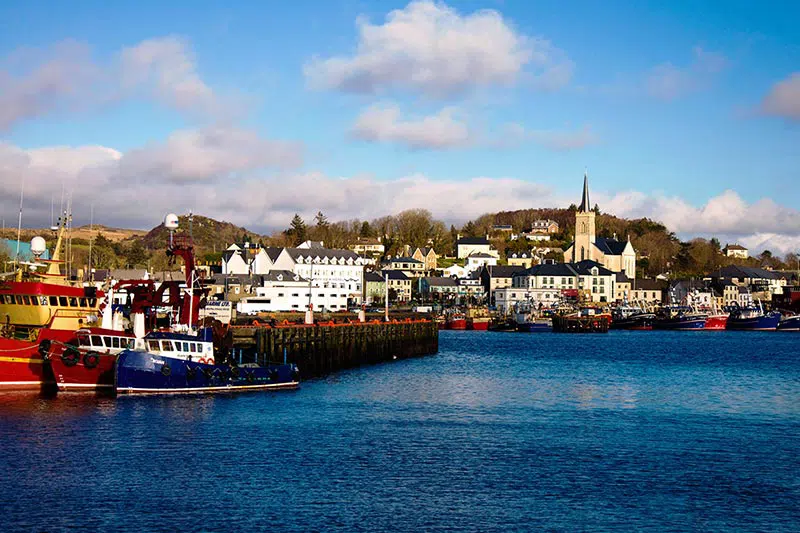
Killybegs
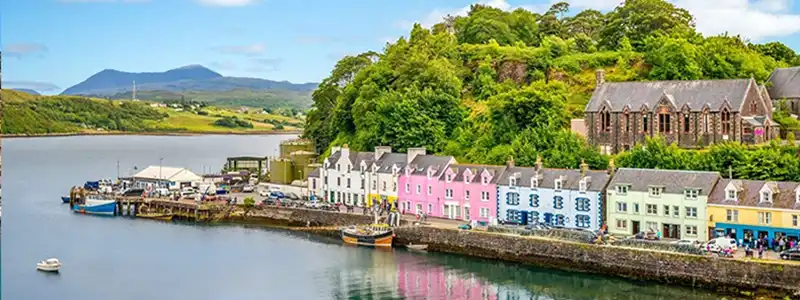
Portree

Lerwick
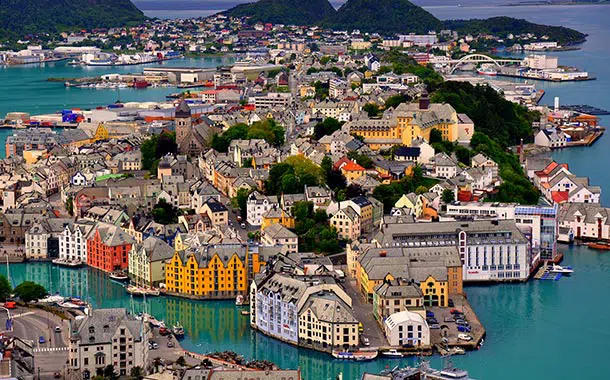
Alesund
Alesund is a seaport, known for its extraordinary collection of Art Nouveau architecture. Come here to see a huge variety of creative decorations on the fronts of the buildings. Climb the 418 steps to the top of Mount Aksla and you will be rewarded with an unforgettable view.
Ålesund is a natural starting point for an active holiday with a beautiful coastline and cliffs, deep valleys, fjords and spectacular mountains. It is also a great place for children, offering a series of exciting experiences for the whole family, from seeing the fish and penguins at the Atlanterhavsparken aquarium, to the exciting Barnas Lekeland Children's Playland, to travelling back in time at the open-air Sunnmøre Museum or the Nouveau Art Centre.
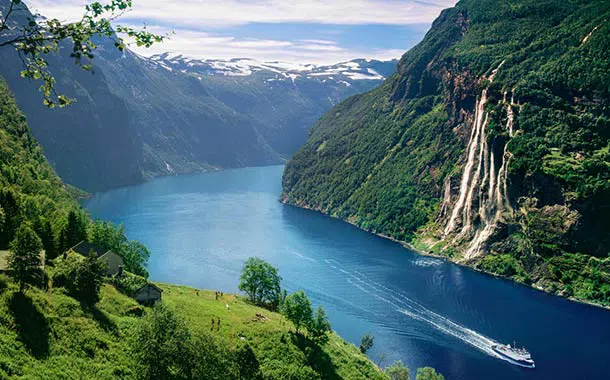
Geiranger
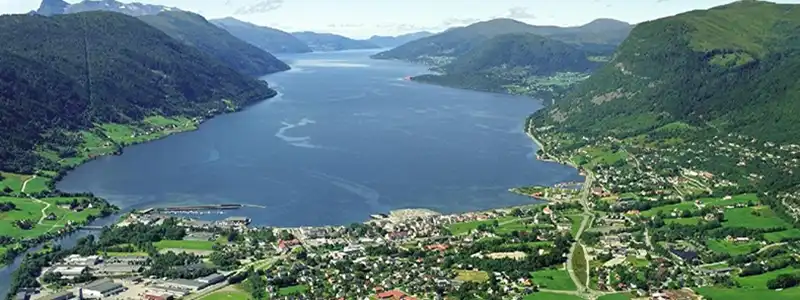
Nordfjordeid
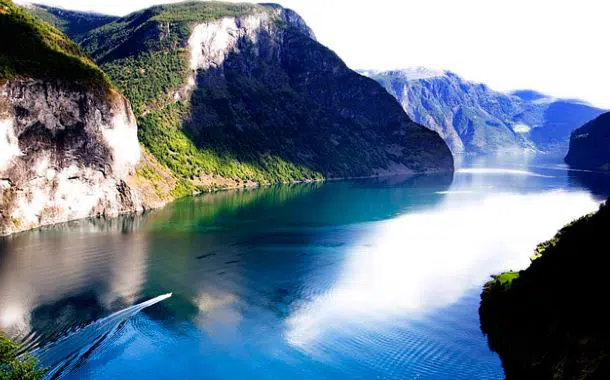
Flam
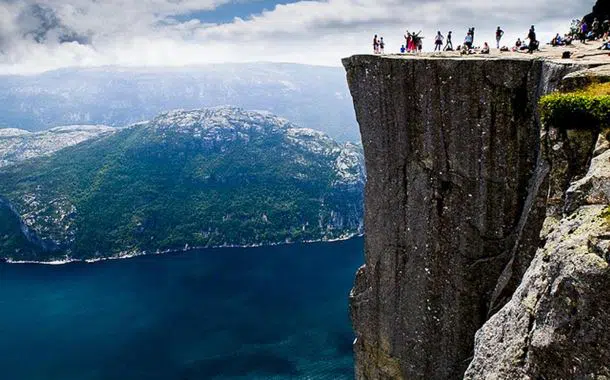
Stavanger
Stavanger is a Norwegian city in Rogaland County and its origins are said to be dated back to 10.000 years ago. It received the status of “city” in XII Century and it was in the same period that it became a bishopric, acquiring a big religious power. The city lost this role after the Protestant Reform in 1536. Stavanger lived an economic boom at the end of 60’s: this area became an important base for oil extractions in the North Sea.
Stavanger is a very active cultural city and it was chosen as European Cultutural Capital in 2008.
Stavanger is a well-known touristic resort due to its breath-taking landscapes of the city and the neighbouring areas. You can’t miss out the Preikestolen, a rock 604 metres high where you can enjoy an amazing view and that is visited every year by more and more tourists.
The city is lively and rich of attractions for your leisure time: there are plenty of restaurants, bars and sops. The city centre is quite small and it’s better to visit it by foot to enjoy the positive atmosphere to the fullest. Visiting Stavanger on a cruise to Northern Europe is one of the best ways to benefit from the landscape and for having a direct contact with nature.
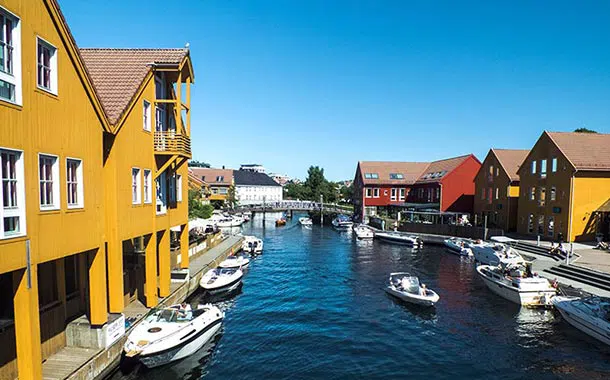
Kristiansand
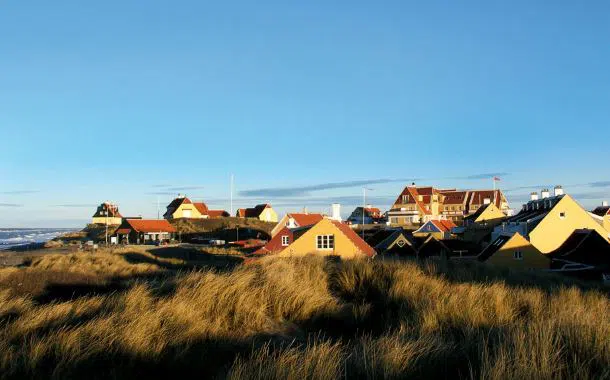
Skagen
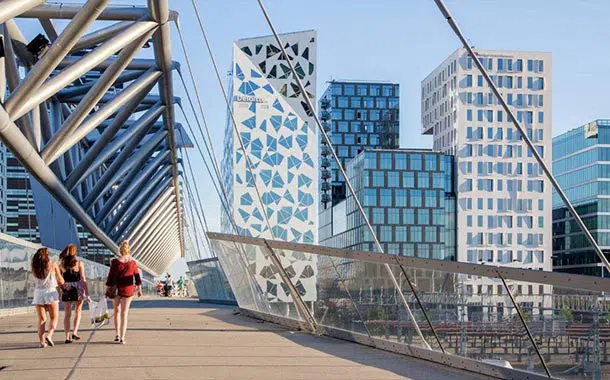
Oslo
Oslo, located in the southeastern part of the country, is the capital and largest city of Norway. Oslo is a vibrant city that seamlessly blends its rich history with modern urban development, making it a dynamic and attractive place to live and visit.
It was founded around 1040 by King Harald Hardrada and became the capital of the country in 1299 under King Håkon V. The city was partly destroyed by a fire in 1624 and its reconstruction began under the reign of King Christian IV. King Christian IV renamed the city Christiania. The original name, Oslo, was restored in 1925. Oslo is known for its beautiful natural surroundings, including forests, hills, and lakes. Thanks to its beautiful landscapes, it is possible to take part in numerous outdoor activities like hiking, skiing, and boating.
These unique characteristics make the city the ideal destination for nature lovers. The city is home to several renowned museums, including the Viking Ship Museum, the Munch Museum (dedicated to the works of Edvard Munch, famous for "The Scream"), and the National Gallery. Do not miss the opportunity to visit one of them and share your pictures with your friends! Every year Oslo holds one of the most important cultural events, the Nobel Peace Prize is awarded annually in the city at the City Hall.

Oslo
Oslo, located in the southeastern part of the country, is the capital and largest city of Norway. Oslo is a vibrant city that seamlessly blends its rich history with modern urban development, making it a dynamic and attractive place to live and visit.
It was founded around 1040 by King Harald Hardrada and became the capital of the country in 1299 under King Håkon V. The city was partly destroyed by a fire in 1624 and its reconstruction began under the reign of King Christian IV. King Christian IV renamed the city Christiania. The original name, Oslo, was restored in 1925. Oslo is known for its beautiful natural surroundings, including forests, hills, and lakes. Thanks to its beautiful landscapes, it is possible to take part in numerous outdoor activities like hiking, skiing, and boating.
These unique characteristics make the city the ideal destination for nature lovers. The city is home to several renowned museums, including the Viking Ship Museum, the Munch Museum (dedicated to the works of Edvard Munch, famous for "The Scream"), and the National Gallery. Do not miss the opportunity to visit one of them and share your pictures with your friends! Every year Oslo holds one of the most important cultural events, the Nobel Peace Prize is awarded annually in the city at the City Hall.
